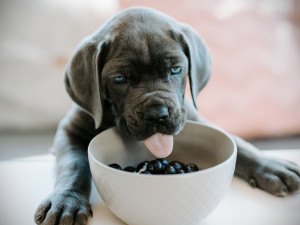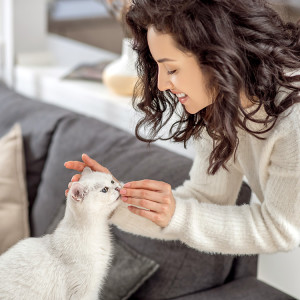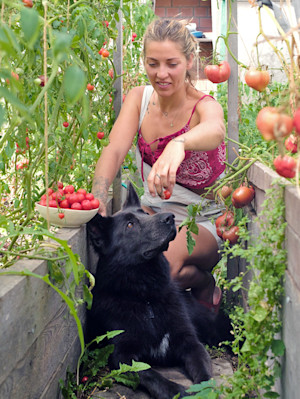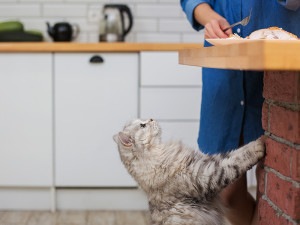Do You Have a Picky Dog? 5 Simple Ways to Get Them to Eat
A veterinary nutritionist shares what you can do if you’re being held hostage by your dog’s particular palate.
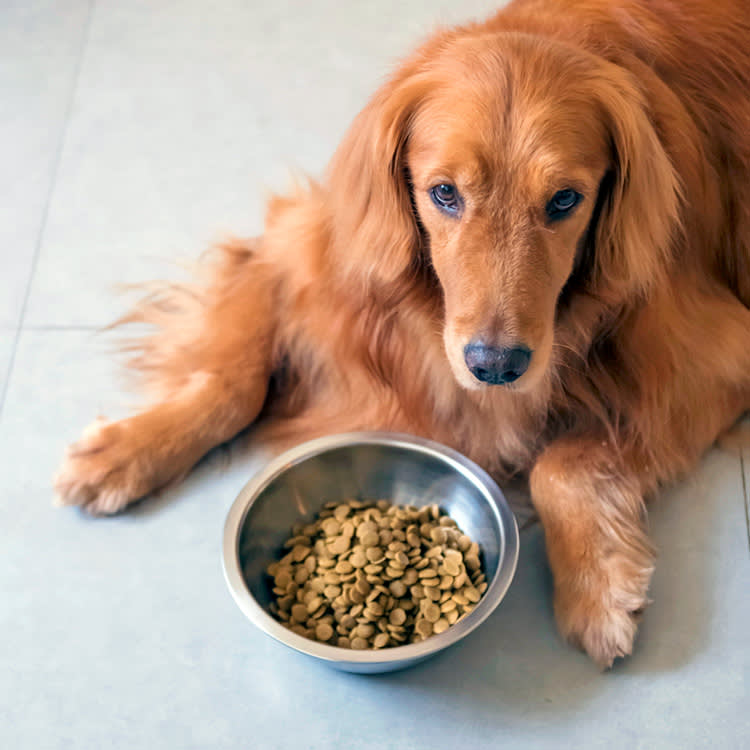
Share Article
We all know the frustration of trying to agree on a restaurant with a friend who’s a less-than-adventurous eater. But at least picky (or, as they’d probably put it, specific) humans can communicate their preferences — or make themselves a sandwich for the road.
Animals aren’t so lucky, and they can be just as fussy. And since our dogs don’t speak English or do their own grocery shopping, it can be frustrating to get to the bottom of exactly what they want. Not to mention, it’s freaky when a pup won’t eat, and it can get dangerous for their health...fast.
It might be hard to imagine a dog not wanting to eat something compared to a cat (whether that “something” is their kibble or your cheeseburger) — but dogs can be as particular as the next creature. “We do see picky eaters among dogs, especially in smaller breeds,” explains veterinary nutritionist Dr. Sally Pereaopens in new tab.
So, how do you cope when a dog is turning their nose up at all the dinner options you're offer them? Dr. Perea has some tips.

Introduce variety early.
Variety is, as they say, the spice of life. As pet parents, we have to show our pets a variety of foods as early as possible to get them used to different experiences. Otherwise, they can become stuck in their ways.
Introducing a range of textures early is particularly important. Pets who get used to dry food early may struggle to adjust to wet food later in life. Dr. Perea recommends that pet parents feed their pets wet and dry food from the start. Gently cooked, pre-portioned options like those made by Nom Nomopens in new tab contain a variety of textures that dogs crave.
Experiment with food taste, texture, and temperature.
If your pet won’t eat, you might need to guess at exactly what it is about their food that’s bothering them. “If you have a picky eater, especially a dog, experimenting with a variety of foods and food forms can be helpful,” Dr. Perea says. “Some dogs may prefer a dry or wet form over the other.”
Temperature can be another factor to consider. Dogs often prefer for their meals to be warmed up. “Warming any wet foods to room temperature (if normally kept in cold storage) is helpful to increase the palatability and aroma of the food,” Dr. Perea says.
If transitioning diets, take it slow.
Dogs — especially those who weren’t exposed to a variety of flavors and textures when they were young — can sometimes avoid eating if they’re starting on a new food. According to the American Kennel Clubopens in new tab (AKC), dogs should transition to a new diet between five to seven days. But talk to your vet about your individual pet and what they recommend (it may take longer than a week).
You’ll want to begin by feeding your pet both their old and new food, with only 25 percent of the meal being made up of the new food. You can then gradually increase the ratio until they’re eating 100 percent new food.
Try food toppers.
Food toppers can help encourage a pet to interact with their food — sort of like covering a kid’s broccoli in cheese. “Many dogs do respond well to toppers, which could include a wet or gently cooked food,” Dr. Perea says. “These can help spark the dog’s interest in the food, and is a fun way to add variety to a dry kibble.”
Dr. Perea adds that homemade toppers should be prepared and given thoughtfully. “The rule of thumb is that unbalanced home-prepared foods or treats should not exceed 10 percent of the pet’s daily calories,” Dr. Perea says.
If you don’t have the time (or patience) to make a nutritionally balanced topper at home, try Nom Nom's delicious gently cooked food to add a little excitement and variety to your dog's bowl. Plus, you can also get 50 percent off your first boxopens in new tab.
Another caveat: If your pet is on a therapeutic diet, “additions or toppers can interfere with the efficacy of the therapeutic food,” Dr. Perea says. “Your veterinarian or veterinary nutritionists can help guide you to the best options for your pet.”
Know when to see a veterinarian.
Picky eating isn’t always a choice — sometimes it points to a larger health problem. “Underlying metabolic conditions, such as poor kidney or liver function are two examples where the pet parent may begin to notice a reduced appetite,” Dr. Perea says.
That doesn’t mean that every instance of picky eating is due to an illness. Dr. Perea recommends looking out for any changes in a pet’s behavior, first and foremost. “If you know your pet to normally be a picky eater, then poor food intake may be less worrisome,” she says. “The key is to look for a change or trending change in the pet.” She adds that weight loss is another sign that something is wrong with a pet’s health.
You should also see a veterinarian if picky eating is accompanied by a change in water intake. “If you see your pet change their drinking habits (either increased or decreased water consumption), then this is something to discuss with your veterinarian,” Dr. Perea says.
And if your pet starts skipping meals all together, it’s important to get them to a veterinarian. If your pet hasn’t eaten for 24 to 48 hours, they should see a vet.
References:

Sio Hornbuckle
Sio Hornbuckle is the Assistant Editor at Kinship, where they frequently write for the site. As a writer, they specialize in pet news, animal science, and pop culture. They live in New York City with their cat, Toni Collette.
Related articles
![Woman giving her white cat a vitamin.]()
Does My Cat Need Supplements?
![Small brown puppy chewing on plastic donut toy.]()
Toys Containing BPA May Cause Obesity in Dogs, New Study Finds
The chemical has been linked to a variety of health problems in animals.
![Person feeding a couple of cats at home.]()
New Research Finds the Flavor of Food Cats Actually Want to Eat
Cats are notoriously picky, but science is getting to the bottom of their tastes.
![Woman in the garden with her large black dog.]()
Dogs Can Thrive on a Plant-Based Diet, a Study Says—But Is It Actually Good For Them?
Everything you need to know about the pros and cons of a veggie diet.
![Cat asking for human food from counter]()
What Can Cats Eat Besides Cat Food?
Good news for your begging cat: Some of your favorite snacks are safe to share.
Can Dogs Taste Sugar?
We already know they’re sweet.



